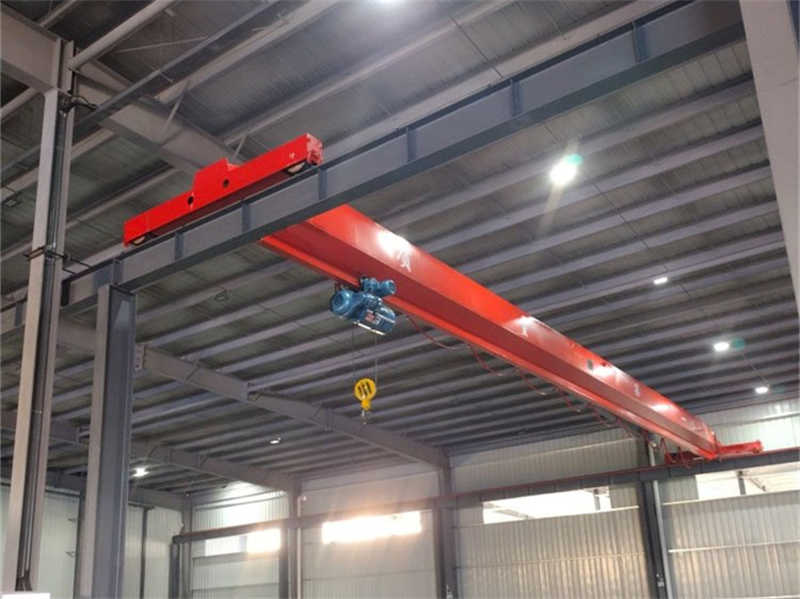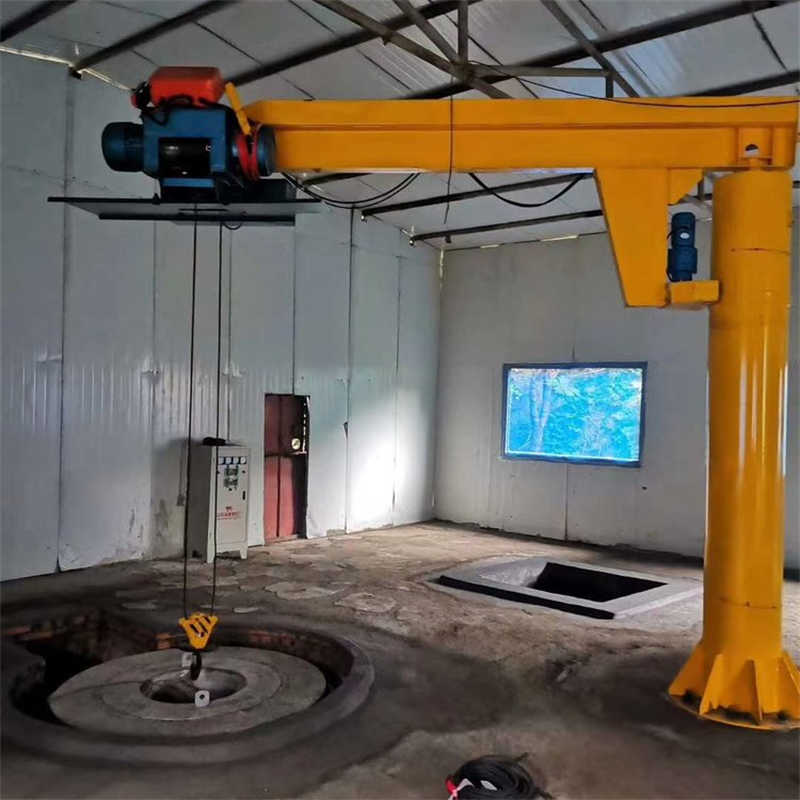Space Constraints? Efficient Small Workshop Crane Layout Solutions by Dongqi Crane
1. Introduction
In modern manufacturing and workshop environments, space optimization is crucial for maintaining productivity. Small workshops, in particular, face challenges in material handling due to limited floor space. Efficient crane systems can significantly improve workflow, but selecting the right crane and optimizing its layout is essential.
Key Questions:
- How can small workshops maximize crane efficiency in tight spaces?
- What types of cranes are best suited for confined areas?
- How can Dongqi Crane’s products provide the best solutions?
This article explores small workshop crane layout strategies, focusing on Dongqi Crane’s high-quality lifting equipment. We will analyze different crane types, space-saving configurations, and practical installation tips to enhance workshop productivity.

2. Common Types of Small Workshop Cranes & Their Features
When selecting a crane for a small workshop, the choice depends on lifting capacity, workspace dimensions, and operational flexibility. Below are the most suitable Dongqi Crane models for compact environments:
2.1 Light-Duty Jib Cranes
- Best for: Localized lifting in tight spaces
- Installation Options: Wall-mounted, freestanding, or column-mounted
- Advantages:
- 360° rotation for flexible material handling
- Minimal floor space occupation
- Ideal for machine loading/unloading
- Dongqi Model Example: DQ-BZ Series Articulating Jib Crane (Capacity: 0.25T–5T)
2.2 Electric Chain Hoists (Single/Double Girder)
- Best for: Linear material movement along a beam
- Advantages:
- Compact design, suitable for low ceilings
- Smooth operation with variable speed control
- Can be integrated with workstation cranes
- Dongqi Model Example: DQ-LD Single Girder Crane (Capacity: 1T–20T)
2.3 Mobile Gantry Cranes
- Best for: Workshops needing flexible, movable lifting
- Advantages:
- No fixed installation required
- Adjustable span and height
- Can be wheeled to different workstations
- Dongqi Model Example: DQ-MG Manual Gantry Crane (Capacity: 0.5T–10T)
2.4 Pillar-Mounted Slewing Cranes
- Best for: Corner installations with 180°–360° coverage
- Advantages:
- Space-saving mast structure
- High load capacity in a small footprint
- Ideal for repetitive lifting tasks
- Dongqi Model Example: DQ-PS Pillar Jib Crane (Capacity: 0.5T–16T)

3. Key Factors in Small Workshop Crane Layout
3.1 Space Assessment
- Measure workshop length, width, and height to avoid obstructions.
- Identify dead zones (e.g., near walls, columns) where cranes can be installed.
- Ensure adequate clearance for crane movement and operator safety.
3.2 Load & Usage Requirements
- Maximum lifting capacity (e.g., 0.5T vs. 5T)
- Frequency of use (occasional vs. continuous operation)
- Lifting height & span (determines crane reach)
3.3 Installation Options
| Type | Best For | Space Impact |
|---|---|---|
| Wall-Mounted | Workshops with sturdy walls | Minimal footprint |
| Freestanding | No wall support available | Requires floor space |
| Ceiling-Mounted | High-bay workshops | Zero floor occupation |
| Mobile Cranes | Multi-workstation handling | Flexible positioning |
3.4 Safety & Compliance
- Follow OSHA/ANSI/ISO standards for crane installations.
- Ensure proper load testing before operation.
- Maintain safe working distance from other machinery.
4. Optimized Small Workshop Crane Layout Strategies
In small workshops, space efficiency is critical—every square meter must contribute to productivity. Below are detailed crane layout strategies to maximize functionality while minimizing footprint.
4.1 Compact Jib Crane Layout
When to Use:
✔ Limited floor space (e.g., < 50㎡)
✔ Frequent small-load handling (e.g., parts, tools, welding materials)
✔ Need for precise positioning
Installation Options:
✅ Wall-Mounted Jib Crane
- Fixed to a load-bearing wall or steel column
- Zero floor obstruction, ideal for tight aisles
- Example: Dongqi DQ-WJ series (0.5T–3T)
✅ Pillar-Mounted Jib Crane
- Requires a concrete foundation but frees up walls
- 360° rotation for multi-workstation coverage
- Example: Dongqi DQ-PS series (1T–16T)
Layout Example:
| Workstation | Crane Type | Coverage Radius | Space Saved |
|---|---|---|---|
| Welding Bay | Wall-Mounted Jib | 3m | 100% floor clearance |
| Assembly Station | Pillar Jib | 4m (360°) | No tripping hazards |
4.2 Low-Headroom Overhead Crane Solutions
Key Challenges in Small Workshops:
➔ Ceiling height < 6m
➔ Obstructed overhead space (pipes, ducts, lighting)
Space-Saving Designs:
🔹 Single-Girder Underhung Cranes
- Hoist rides between girders (not below) → gains 300–500mm headroom
- Dongqi DQ-LD model works at just 4.5m ceiling height
🔹 Monorail Beam Systems
- Single I-beam track + electric chain hoist
- Ideal for linear workflows (e.g., painting lines)
🔹 Modular Workstation Cranes
- Bolt-together aluminum bridge cranes
- No welding needed – reconfigure as layout changes
Case Study: Auto Repair Shop
- Problem: 5m ceiling with HVAC ducts limiting lift height
- Solution: Installed DQ-LD underhung crane (1T capacity)
- Result: Gained 400mm additional lift versus traditional design
4.3 Mobile & Reconfigurable Systems
When Flexibility Matters:
✔ Multi-workstation service
✔ Temporary lifting needs
✔ Frequent layout changes
Equipment Options:
🚜 Mobile Gantry Cranes
- Dongqi DQ-MG series with polyurethane wheels (0.5T–10T)
- No installation – roll to where needed
- Foldable models save storage space
🛤️ Track-Mounted Cranes
- Overhead rail system along workstations
- Manual push or motorized movement
Layout Tip:
- Designate “parking zones” for mobile cranes when not in use
- Use quick-disconnect power for electric models
4.4 Vertical Space Utilization (3D Layouts)
Stacking Strategies:
🔻 Mezzanine + Crane Integration
- Ground floor: Heavy lifting with gantry crane
- Upper level: Light-duty jib crane for small parts
🔻 Multi-Level Lifting Paths
- Lower zone: Raw material handling
- Upper zone: Finished product staging
Example: Metal Fabrication Shop
| Level | Equipment | Crane Type | Purpose |
|---|---|---|---|
| 0m (Floor) | Press Brake | 5T Gantry | Sheet metal loading |
| 3m (Platform) | Assembly Tables | 1T Jib Crane | Component positioning |
4.5 Safety-Optimized Layouts
Critical Clearances:
⚠ 50cm minimum between crane swing radius and obstacles
⚠ 1m safety buffer around floor-mounted equipment
Anti-Collision Measures:
🔵 Limit switches to prevent over-travel
🔵 Blue safety lighting to mark crane paths
🔵 Weight sensors to prevent overload
Ergonomic Considerations:
- Position controls within arm’s reach
- Ensure clear sightlines for operators
Summary Table: Layout Strategy Selection Guide
| Workshop Limitation | Recommended Strategy | Dongqi Equipment |
|---|---|---|
| Tiny floor space (<30㎡) | Wall-mounted jib crane | DQ-WJ Series |
| Low ceiling height | Underhung single girder | DQ-LD Crane |
| Frequent layout changes | Mobile gantry crane | DQ-MG Series |
| Multi-level operations | Mezzanine + jib combo | DQ-PS + DQ-BZ |
By implementing these space-conscious crane layouts, small workshops can double usable lifting capacity without expanding their footprint. Dongqi Crane’s modular designs make adaptation easy as needs evolve.
5. Recommended Dongqi Crane Models for Small Workshops
| Model | Type | Capacity | Key Feature |
|---|---|---|---|
| DQ-BZ | Articulating Jib | 0.25T–5T | 360° rotation |
| DQ-LD | Single Girder | 1T–20T | Low headroom |
| DQ-MG | Mobile Gantry | 0.5T–10T | No installation needed |
| DQ-PS | Pillar Jib | 0.5T–16T | Mast-mounted |
6. Implementation Steps & Safety Tips
6.1 Planning & Measurement
- Create a workshop layout diagram with crane coverage zones.
- Check floor load capacity for freestanding cranes.
6.2 Crane Selection & Procurement
- Match crane type to load requirements.
- Consider future expansion needs.
6.3 Installation & Testing
- Ensure proper anchoring for fixed cranes.
- Conduct load tests before full operation.
6.4 Maintenance & Safety Checks
- Regularly inspect wires, motors, and brakes.
- Train operators on safe lifting practices.
7. Conclusion
Small workshops can maximize efficiency even with limited space by choosing the right Dongqi Crane model and optimizing its layout. Whether using jib cranes, gantry systems, or mobile hoists, proper planning ensures smooth material handling without compromising safety.
For customized solutions, Dongqi Crane offers tailored designs to fit unique workshop constraints.
